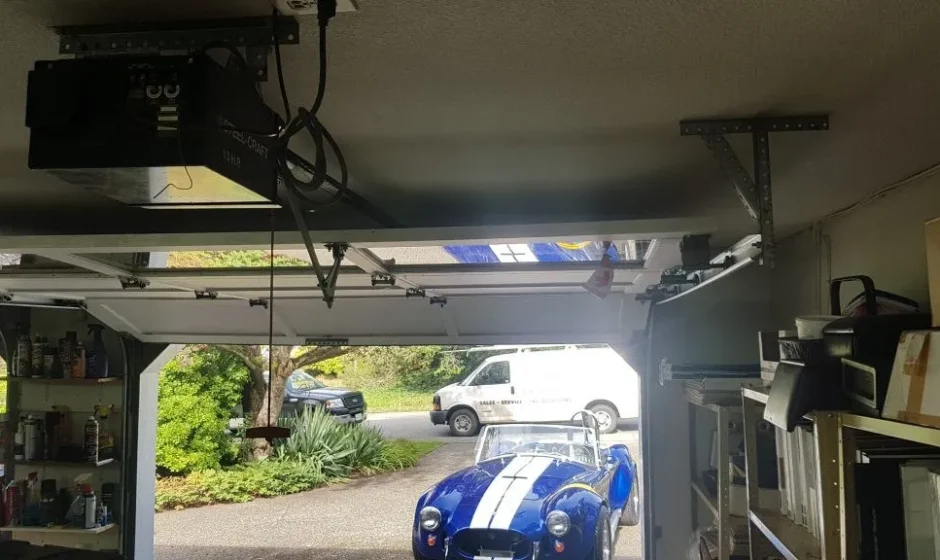In an era of ever-advancing technology, the concept of a smart home has become increasingly prevalent. From controlling your thermostat with a smartphone app to monitoring your security cameras remotely, homeowners are embracing the convenience and automation that smart devices offer. One integral component of the smart home ecosystem is the garage door opener. By integrating Z-Wave technology, smart garage door openers have taken convenience, security, and home automation to new heights. In this article, we’ll explore the world of Z-Wave integration for smart garage door openers, shedding light on the benefits, compatibility, and how it enhances your home’s intelligence.
Understanding Z-Wave Technology:
Before we delve into the advantages of Z-Wave integration for smart garage door openers, let’s take a moment to understand what Z-Wave technology is and how it works.
Z-Wave is a wireless communication protocol designed for home automation and the Internet of Things (IoT). It operates on low-energy radio waves and uses a mesh network topology, where each Z-Wave device acts as a signal repeater, creating a reliable and efficient network. This mesh network allows Z-Wave devices to communicate with one another and with a central controller or hub.
The Benefits of Z-Wave Integration for Smart Garage Door Openers:
- Enhanced Convenience: Integrating Z-Wave technology into your garage door opener means you can control and monitor your garage door from anywhere with an internet connection. Whether you’re at work, on vacation, or simply inside your home, you can open or close your garage door with a smartphone app or voice command.
- Compatibility: Z-Wave is known for its compatibility with a wide range of smart home devices and platforms. This means you can seamlessly integrate your smart garage door opener with other Z-Wave-compatible devices, such as smart locks, lights, and thermostats, to create a unified and interconnected smart home ecosystem.
- Voice Control: With Z-Wave integration, you can enjoy the convenience of voice control for your garage door. By using voice assistants like Amazon Alexa, Google Assistant, or Apple HomeKit, you can open or close your garage door with simple voice commands.
- Remote Monitoring: Z-Wave-enabled smart garage door openers offer real-time monitoring capabilities. You can receive notifications and alerts on your smartphone when your garage door is opened or closed, providing you with enhanced security and peace of mind.
- Guest Access: Many Z-Wave-enabled garage door openers allow you to grant temporary access to guests or service professionals remotely. This feature is particularly useful when you need to provide access to your garage while you’re away from home.
- Home Automation: Z-Wave integration opens the door to sophisticated home automation routines. For example, you can set up automation sequences that automatically open the garage door when you arrive home or turn on specific lights and adjust your thermostat when the garage door is closed.
How Z-Wave Integration Works for Smart Garage Door Openers:
To integrate Z-Wave technology into your garage door opener, you’ll need a Z-Wave-compatible garage door opener and a Z-Wave hub or controller. Here’s how the process typically works:
- Choose a Z-Wave-Compatible Garage Door Opener: Start by selecting a garage door opener that is compatible with Z-Wave technology. Many reputable garage door opener manufacturers offer Z-Wave-enabled models.
- Install the Garage Door Opener: Follow the manufacturer’s instructions to install the Z-Wave-compatible garage door opener in your garage. This may involve mounting the opener unit, connecting it to your garage door, and ensuring that it is properly powered.
- Set Up the Z-Wave Hub or Controller: Acquire a Z-Wave hub or controller device. This hub serves as the central brain of your smart home system, allowing you to connect and control various Z-Wave devices, including your garage door opener.
- Pair the Garage Door Opener with the Z-Wave Hub: Using the Z-Wave hub’s companion app or interface, initiate the pairing process. This typically involves putting the Z-Wave garage door opener into pairing mode and following the on-screen instructions to establish a secure connection between the opener and the hub.
- Create Automation and Control Rules: Once your garage door opener is successfully paired with the Z-Wave hub, you can start creating automation routines and control rules. For example, you can program the garage door to automatically open when your smartphone’s GPS detects that you’re approaching home.
- Monitor and Control Remotely: You can now monitor and control your garage door remotely through the Z-Wave hub’s app or voice commands via compatible voice assistants. Additionally, you can integrate your garage door opener into broader smart home automation scenarios to enhance your daily routines.
Compatibility and Integration with Other Devices:
One of the significant advantages of Z-Wave integration for smart garage door openers is the compatibility it offers with a wide range of smart home devices and platforms. Here are some examples of how you can create a cohesive smart home ecosystem with Z-Wave:
- Smart Locks: You can synchronize your garage door opener with smart locks on your front and rear doors. When you arrive home, both the garage door and your front door can unlock simultaneously, providing seamless entry.
- Lights: Integrate Z-Wave-compatible lights into your automation routines. For example, when you open your garage door, the lights in your garage and home entryway can automatically turn on.
- Thermostats: Adjust your home’s thermostat settings based on the status of your garage door. When the garage door is closed, the thermostat can optimize energy savings. Conversely, when the garage door is opened, it can adjust the temperature for comfort.
- Security Cameras: Pair your garage door opener with security cameras for comprehensive surveillance. When the garage door is activated, cameras can start recording or provide live video feeds for added security.
- Voice Assistants: Utilize voice assistants like Amazon Alexa, Google Assistant, or Apple HomeKit to control your entire smart home ecosystem, including your garage door opener, with voice commands.
Security Considerations:
When integrating Z-Wave technology into your garage door opener, it’s essential to prioritize security. Here are some key security considerations:
- Secure Passwords: Ensure that your Z-Wave hub and all connected devices, including your garage door opener, have strong, unique passwords. Avoid using default or easily guessable passwords.
- Firmware Updates: Regularly check for and apply firmware updates provided by the manufacturer for your Z-Wave hub and devices. These updates often include security patches and improvements.
- Network Security: Protect your home Wi-Fi network with a strong password and use encryption protocols like WPA3. This safeguards your Z-Wave devices from unauthorized access.
- User Access Control: Review and manage user access permissions for your Z-Wave hub and devices. Limit access to trusted individuals and revoke access for any unauthorized users promptly.
Conclusion:
Integrating Z-Wave technology into your smart garage door opener opens the door to enhanced convenience, security, and home automation possibilities. With the ability to control your garage door remotely, create custom automation routines, and integrate your garage door opener with other smart devices, you can transform your house into a truly intelligent home. Z-Wave-enabled smart garage door openers offer a seamless and connected experience, allowing you to enjoy the benefits of modern technology while enhancing the overall functionality and security of your home.



